Wildlife
Home > Pest Library > Wildlife
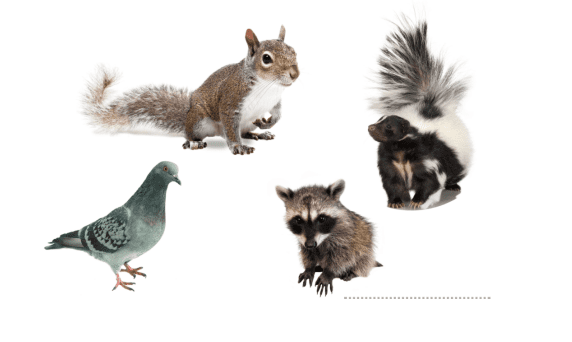
What is wildlife?
Wildlife is a term that is used to describe animals that have not been domesticated. Wild animals live successfully in the wild without the help of people but, that doesn’t mean they haven’t come to rely on us for food and shelter. As our habitats have merged, wildlife has learned to take advantage of the necessities that our Colorado homes provide them. Some of the most common wild animals found living throughout our area of Colorado that we get calls for are Raccoons, Skunks and Squirrels. Others include but are not limited to: Snakes, Pigeons, Prairie Dogs and Bats.

Raccoons are fairly easy to recognize and identify due to the distinctive black mask of fur around their eyes. They are black and grey in color with a ringed tail. They are nocturnal animals that rely heavily on us for food and even shelter. They eat a wide range of food including meats, fish, pet food, seeds, insects, fruits, vegetables, and whatever else they can find in your trash. Raccoons average 25-30 lbs. and can easily gain access to your home if they’re motivated. They can push through roof soffit intersections, enter through roof vents, damaged roof edges, and chimneys. Once inside, the large animals can easily trample and compress insulation. They also relocate it to make nests. Raccoons also damage electrical and ventilation systems, which can lead to water damage and even fire.
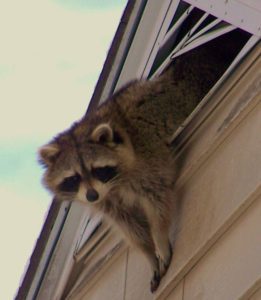

Skunks are black with a white stripe traveling down the entire body and tail. The average size of a skunk is 9-10 inches and their weight can range from 1 to 10 pounds. They have short legs, sharp claws on all four feet, long tail which helps to balance them when running, and excellent eyesight and hearing abilities as well as an incredible sense of smell. The skunk is known for spraying a foul odor from glands found at the base of their tails as a defense mechanism. They are omnivores, meaning that they eat both plants and animals. Skunks lead diurnal lives, meaning they are active during the day while searching for food and then retreat to their burrows at night. Skunks typically dig their own burrows but may also take shelter under rocks, logs, and animal dens.
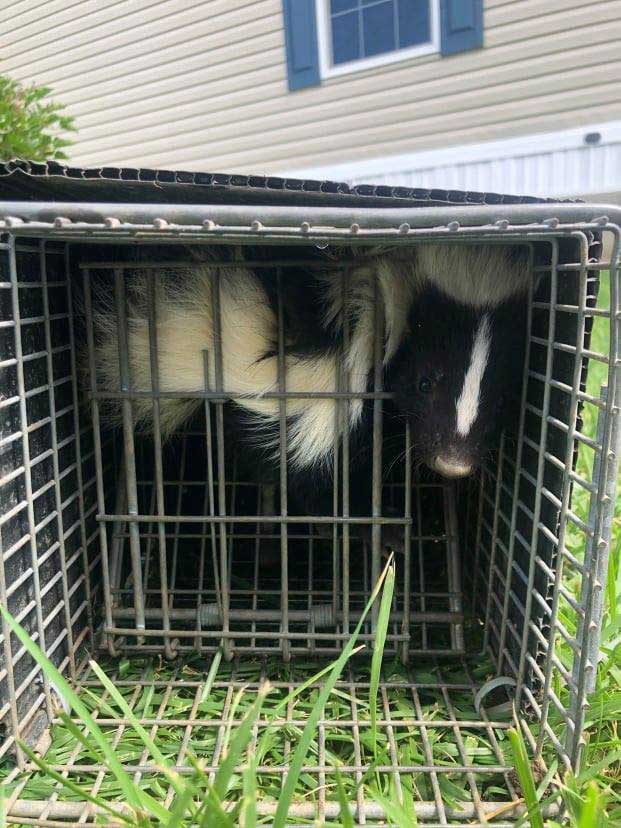
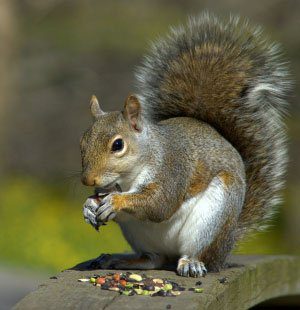
Squirrels in Colorado, of which there are many types, are often found living close to people and our homes. They come in a variety of colors including brown, gray, red, or black. They have slender bodies with bushy tails and large eyes. Hind limbs are longer than their front limbs, and they four or five toes on each paw. Tree squirrel damage is typically caused when the pests enter homes to nest. Entering through attics and chimneys, they will gnaw on insulation, electrical wiring, and structural supports. They are also known to damage lawns, gardens, and flowerbeds. Additionally, tree squirrels harbor parasites that they can spread; some species are known transmit diseases such as plague, but this is very rare. They are mostly herbivorous and feed on seeds, nuts, berries, and acorns.
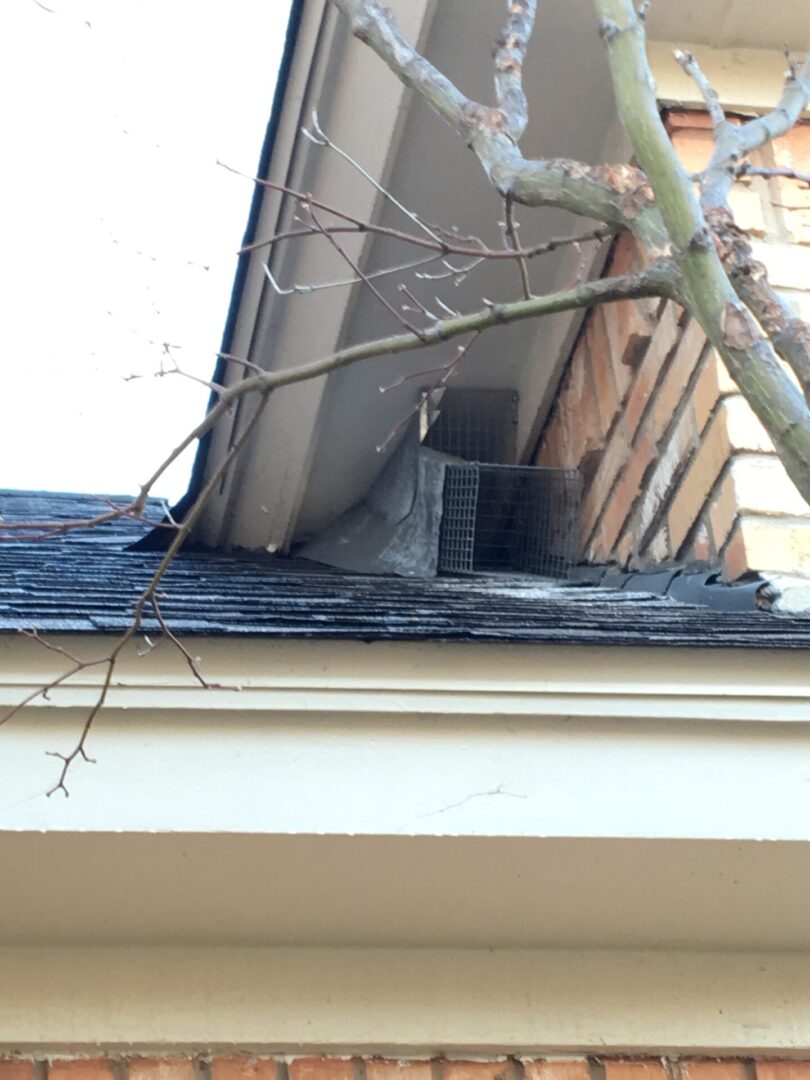
Is wildlife dangerous?
Wildlife can be dangerous to people and properties. Wild animals carry and spread a variety of diseases that can make people very ill, and they can cause a lot of destruction by digging through gardens, lawns, and trash while foraging for food. They also will nest under decks, sheds, and foundations, where they cause structural damage. Wildlife that decides to nest inside your home or business will contaminate food and damage personal property with their chewing habits. Keep in mind that wild animals – no matter how cute – have unpredictable behaviors and are not our pets. When scared or threatened, these wild animals will bite, scratch, or otherwise lash out to protect themselves.
Why do I have a wildlife problem?
Wild animals find their way onto your property because it is providing them with something they need such as food, water, or shelter. Bird feeders, compost bins, gardens, lawns, pet food bowls, and trash cans can all be food sources for wild animals, while birdbaths, clogged gutters, and leaky faucets or hoses act as water sources. Additionally, wildlife may choose to nest in garages, roof eaves, sheds, trees, tree stumps, and woodpiles, as well as inside of our homes and commercial properties.
Where will I find wildlife?
Many wildlife invaders often find their way into Colorado homes and outbuildings to nest and forage for food. Raccoons create dens in the ground, under decks or sheds, in between rocks, and in hollow trees. Indoors, raccoons sometimes make their dens inside attics, chimneys, and crawlspaces. Pigeons are often found nesting in barns, parks, warehouses, yards, on rocky cliffs, on roofs, and under roof eaves, and may find their way into attics, chimneys, and garages. Squirrels are usually found nesting high up in trees and often find their way into barns, garages, homes, and sheds to nest. Once inside, they nest in attics, crawlspaces, and chimneys. Skunks live in fields, pastures, and yards next to wooded areas. Their preferred burrowing spots include hollow logs or the abandoned burrows of other animals. Skunks don’t regularly move into homes to nest but will often create nesting areas under decks, sheds, or foundations.
How do I get rid of wildlife?
The best way to eliminate wildlife from your Colorado property is to partner with a local pest control expert. At Affordable Pest Control, we are committed to providing each of our customers with superior pest control services to meet their individual needs. Our experienced and knowledgeable technicians always perform the most advanced, effective wildlife control services. To learn more about working together to rid your home or business in Colorado of wildlife and other pests, call Affordable Pest Control today!
How can I prevent wildlife in the future?
The following tips can help you to protect your Colorado home or business from becoming overrun with wild animals:
- Remove bird and other wild animal feeders from your property.
- Trim back tree branches away from your home or business.
- Remove tree stumps and fallen trees from your property.
- Keep outdoor eating areas free of food debris.
- Pick up uneaten pet food between feedings.
- Fix holes along the roofline and at roof intersections.
- Make sure compost bins and track cans have locking lids.
- Install chimney caps and repair any loose window screens.
- Place wire mesh around decks and sheds to stop wild animals from getting underneath.
Request Your Free Inspection
Complete the form below to schedule your no obligation inspection.
